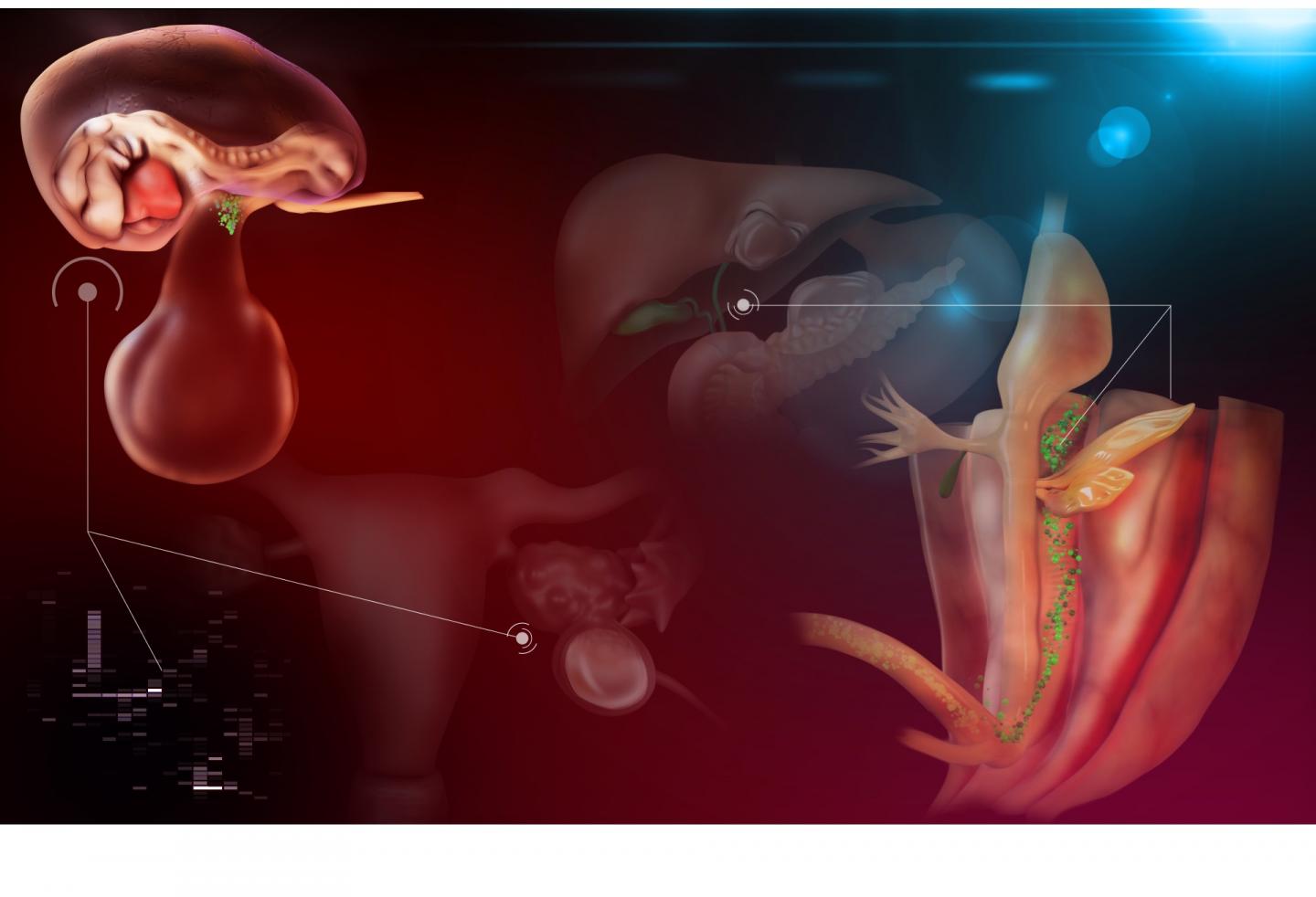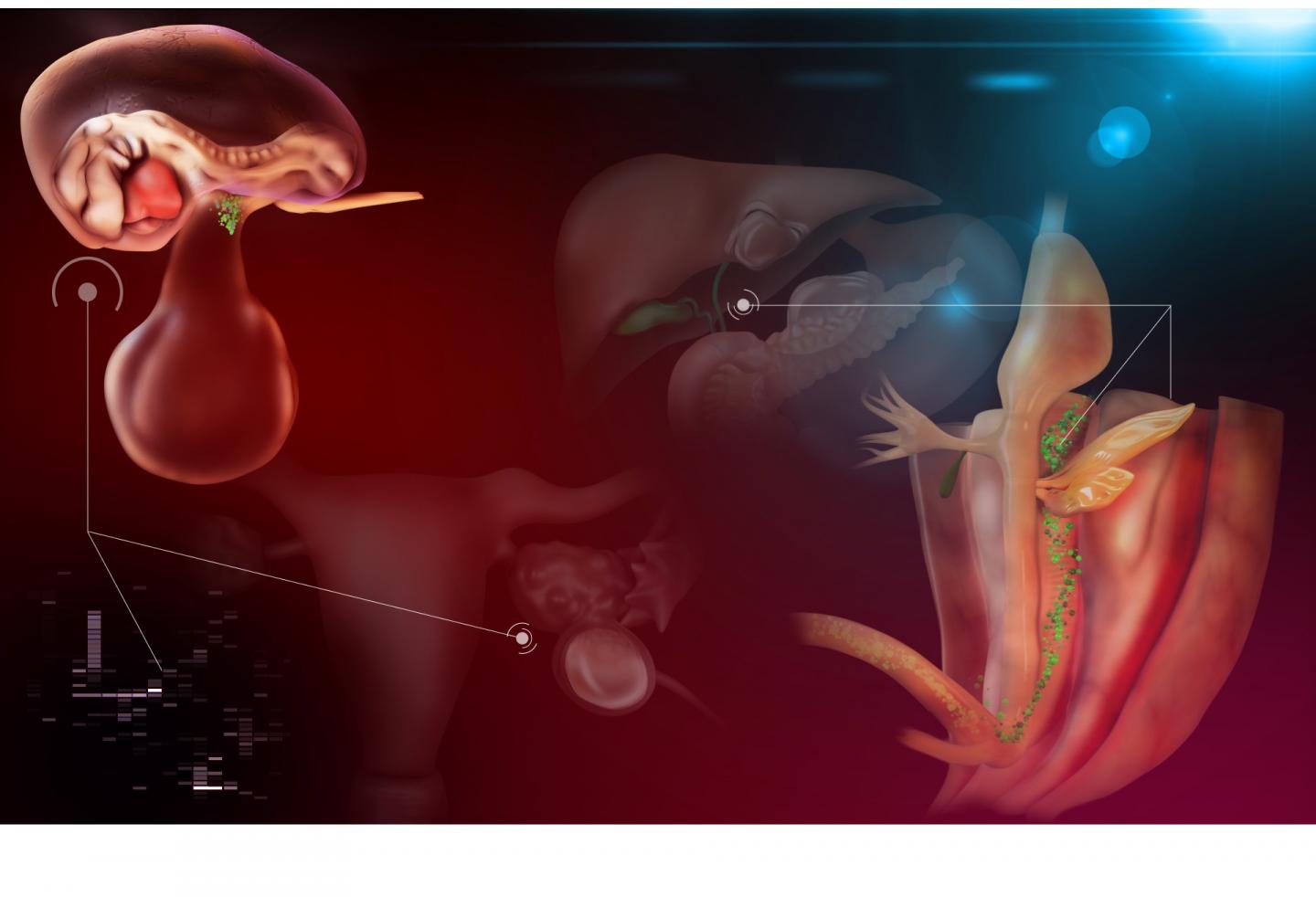
Credit: © Laurence Zulianello
Among several forms of pancreatic cancer, one of them affects specifically women, often young. How is this possible, even though the pancreas is an organ with little exposure to sex hormones? This pancreatic cancer, known as "mucinous cyst", has strange similarities with another mucinous cancer, affecting the ovaries. By conducting large-scale analyses of genomic data, researchers at the University of Geneva (UNIGE) and at the University Hospitals of Geneva (HUG), Switzerland, in collaboration with colleagues from the United States have provided an answer: both tumours originate from embryonic germ cells. While still undifferentiated, these cells migrate to the reproductive organs. On their way, some can mistakenly stop in other organs, bringing a risk of tumour that may occur 30 years later. By allowing a better classification of these mucinous tumours, this study, to be read in the Journal of Pathology, paves the way for a more appropriate and personalized management aligned with the tumour's origin.
Mucinous tumours of the ovary and pancreas affect young women – between 30 and 40 years of age. They take the form of a large cyst, a kind of ball filled with liquid. Rare – they account for about 3% of ovarian and pancreatic cancers – they are usually treated by surgery. Taken in time, the cancerous cyst is completely removed. However, in 15% of cases, the cyst breaks before surgery; the cancer cells spread into the peritoneum, giving rise to metastases that are highly resistant to chemotherapy. In such cases, the survival prognosis of patients does not exceed one year.
"Initially, this work was based on clinical observation," says study leader Dr. Intidhar Labidi-Galy, a researcher at the Translational Research Centre in Onco-haematology at the UNIGE Faculty of Medicine and a physician at the HUG. "As a specialist in ovarian cancer, I came across an article detailing the genetic profile of mucinous tumours of the pancreas. To my great surprise, they had the same genetic alterations as mucinous tumours of the ovary, although these two organs have no direct relationship with each other. Dr. Kevin Elias, assistant professor of obstetrics and gynecology at Brigham's and Women's Hospital, Boston, USA and first author of the paper, identifies the close links between the two tumours: "We found the same genetic mutations, the same types of victims – young women, often smokers – and, even more surprisingly, ovarian tissue in pancreatic cysts."
A common origin
Why is a non-gynaecological cancer almost exclusively female? What is the link between the ovary and the pancreas? "It is only during embryogenesis that these organs are really close. At the very beginning of pregnancy, the embryo possesses primordial germ cells – in a way, precursors of gametes, oocytes or spermatozoa – which, between 4 and 6 weeks of pregnancy, makes a long migration in the human body. They pass behind the future pancreas and arrive in the outline of the gonads, around the 7th week of pregnancy. Most likely, some of these germ cells stop on the way," says Dr. Labidi-Galy.
Using public databases, Kevin Elias and Petros Tsantoulis from UNIGE, together with Intidhar Labidi-Galy and co-leader Ronny Drapkin from University of Pennsylvania have developed a transcriptomic profile – which identifies gene expression levels in a tissue – of primordial germ cells at 6, 7, 11, 16 and 17 weeks of pregnancy, as well as of tumoral and healthy ovarian and pancreatic cells.
The researchers then compared these data, on one hand with the pancreas and on the other hand with the ovary, by studying for each of these two organs the profile of healthy tissues, mucinous tumours and other types of tumours. Their results are clear: in both cases, the transcriptomic profile of the mucinous tumour is far away from the supposed tissue of origin (ovary or pancreas), but very close to the primordial germ cells. This proves that these tumours are closer to the primordial germ cells than to the organ in which they developed.
Unexpected stops during migration
These results indicate that a stop in cell migration that occurred accidentally during the embryonic life of these women may, decades later, be expressed as cancer, depending on their other risk factors (e.g. smoking) and where in the body these primordial germ cells have settled. Indeed, while the scientists have examined the pancreas and ovary, similar cases have been reported everywhere on the migration line of germ cells, particularly in the liver or peritoneum.
"Our results will not change the surgical management of these patients, but may lead us to reflect on chemotherapy protocols. These rare tumours are a bit like the orphan diseases of cancers, for which there are no standard treatments. By linking them to other cancers, we hope to identify treatments that would be effective. For each mutation, what is the best treatment? We are here at the heart of personalized oncology: knowing your enemy in every detail makes it easier to fight him," concludes Dr. Labidi-Galy.
###
Media Contact
Sana Intidhar Labidi-Galy
[email protected]
41-223-795-640
@UNIGEnews
http://www.unige.ch
Original Source
https://www.unige.ch/communication/communiques/en/2018/lorigine-de-cancers-frappant-exclusivement-les-jeunes-femmes/ http://dx.doi.org/10.1002/path.5161





